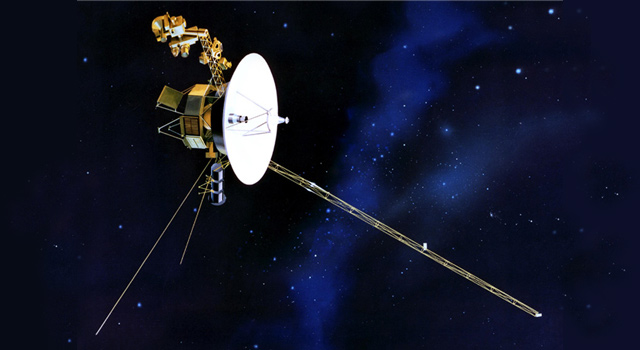Voyager 1 has left the solar system. An amazing feat considering it set off from Earth shortly after Elvis left the building for the final time. The technology of species Homo Sapien can now be considered of interstellar capacity. So, inevitably… here we go… Space: the final frontier. These are the voyages of starship 3DPI. It’s continuing mission to increase the potentiality of human travel beyond our solar system unto actuality within the next 100 years. Or is that the mission of One Hundred Year Star Ship? If you haven’t come across this project yet, it’s the only projectI would be so bold as to suggest going where you have not gone before: DARPA & co’s collective effort to achieve this very remit. 3D printing will be a significant part of the technologies that catalyze that progress.
By the end of this series (projected at five articles), we will be looking at mankind’s most forward looking technologies, such as The Quantum Vacuum Plasma thruster (‘Q-thruster’) which utilizes quantum vacuum fluctuations as its propellant, and magnetohydrodynamics (MHD) to predict the propellant’s behaviour. On the way there, we will examine the profit making potential of asteroid capture, look at space 3D printing projects such as Made In Space, Deep Space Industries and NASA’s Asteroid Capture project – the head of which team, I am graced to say, chats with myself online, I enjoy dropping a very busy man a line on the latest relevant developments of 3DP to their projects.
If you are a maker or small 3D printing business owner pondering the potentials of replicating the famed NASA purchase of MakerBot 3D printers, the world’s most advanced technological advancement agency’s Small Business Innovation Research (S.B.I.R.) and Small Business Technology Transfer (S.T.T.R.) programs are worth looking in to.

Analysis bares witness to the strategic element of the ‘Made In America’ opensource-hardware-to-patented-hardware and market potential regarding DARPA’s Manufacturing Experimentation and Outreach (MENTOR) program, the financing of 3D printing for schools in the US: Catalysation in education > applicability in Science Technology Engineering and Manufacturing (S.T.E.M.) based work-force catalysation of technological progress > inter-relational aspects regarding U.S. geo-strategy.

Voyager
Voyager 1, NASA’s first interplanetary, and now interstellar, probe has achieved this feat with technology including an 8-track tape recorder and computers operating with just 1/240,000 the memory of a ‘low spec’ iPhone. The probe departed Earth the year audiences first watched a certain movie’s opening sequence that included a star-ship so large it took 13 seconds to enter the frame in full.
It’s worth noting that the probe has been classified as having left the solar system before – Voyager 1 has been detecting the interstellar magnetic field since July 27, 2012 – but today represents the first bold step with certitude of liberation from our solar system, a mere 18,800,000,000 km (11.7 billion miles or 125 Astronomical Units) from the now distant star that we call ‘The Sun.’
Karl Maxly, of Engineering.com, whose articles I tend to respect, posits an interesting angle at the time of writing regarding 3D printing, von Neumann probes and the One Hundred Year Star Ship project today. It is logical: although I would speculate that this approach merely represents a number of the stronger paths regarding interstellar space travel.
One base applicability of the concept is to send self-replicating 3D printing nano-probes to other world’s to construct star-ships that contain resources mined from that world by other constructs of the probes, for the star-ship to then ship back to the home-world.
Actual projects using nano-sats are in place, such as project Tin Tin: an interstellar nano-sat mission to Alpha Centauri.
To quote:
‘Project Tin Tin is an effort to lay the foundations for cost-effective technology and engineering validation Cube-at missions, leading up to the first interstellar precursor mission to Alpha Centauri. The objective of Project Tin Tin is to motivate interstellar exploration by pushing the envelope of what is currently possible for deep space exploration.
The Project Tin Tin research team aims to design, model and pursue the launch of a set of nano-sat-sized spacecraft, or “Tins”, with technical and scientifically relevant objectives starting as early as 2015.
The mission objectives include:
1) Assessing current capabilities for near future interstellar precursor nano-sat missions;
2) The incremental space validation of enabling technologies in propulsion, power, communications, structures, fabrication, telemetry and sensors; and
3) To launch the first interstellar spacecraft on route to Alpha Centauri, by the end of the decade.’
The reader may well, most understandably, find that upon the realization mankind is on the brink of genuinely considering terminology such as ‘homeworld’ as a pragmatic, technological and indeed industrial, reference takes a while to rationally and emotionally accept.
In the next part of this series I will be looking at specific applications of 3D printing of nanosats, the International Space Station, forthcoming also is an analysis of aerospace – and how 3D Systems (DDD) and Stratasys (SSYS) are contributing, as well as examining how capturing an asteroid could be a catalyst for global economic and ecological maintenance. For example, asteroid 1997 RT, which has an estimated net worth of USD$6,210,000,000,000.



